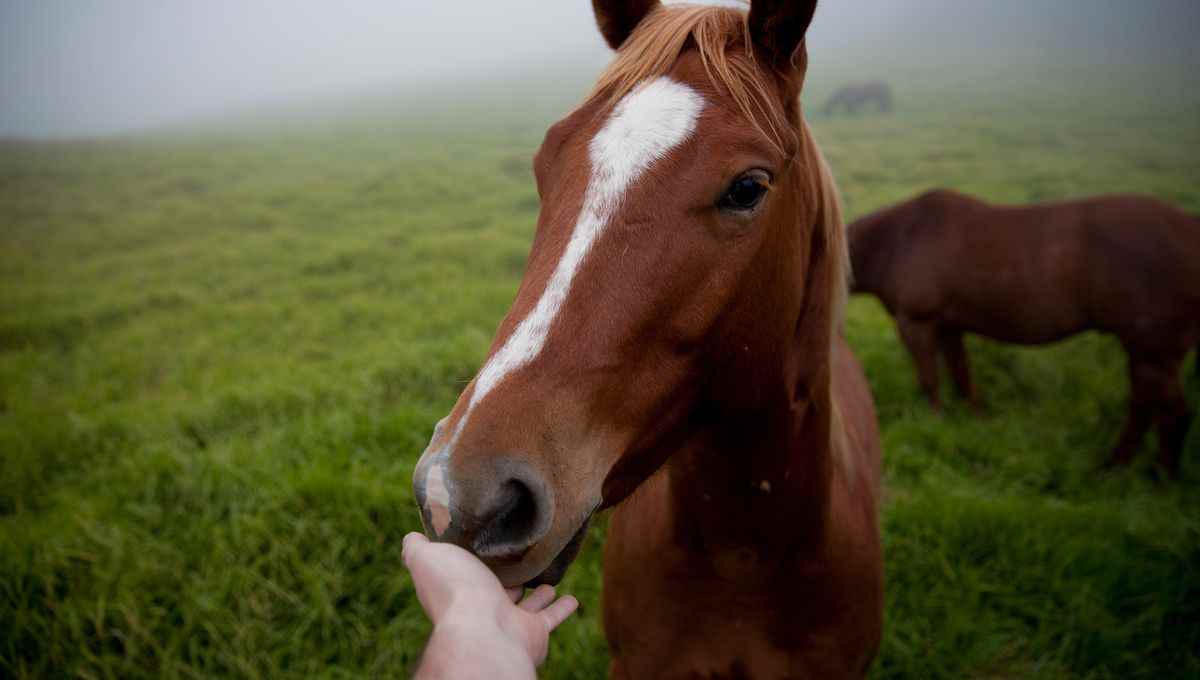First you have to look at his ears: they are facing forward, the horse is curious and you can approach. But if the ears are back, it’s a sign of discomfort, of intranquillity: you don’t approach.
It is Mathilde Guillon behavioral veterinarian who initiates us to the right gestures in our encounter with the equine.
If the horse wants to communicate, then I can reach out to him and let him sniff me. Open or closed hand? Let’s play it safe, if my hand is open, it won’t offer fingers to chew on.
The horse is still there with its head sticking out of the fence, so it maintains its interest in us. Do we touch it?
We can give him a scratch. But not on the head! A lot of horses don’t like that, at least not when it comes to strangers.
But what are we scratching then? The neckline, at shoulder height, anyway at the back of the head.
And let’s respect what is written everywhere around the meadows where the horses are: let’s not give them bread.
Many horses can’t digest bread! Certain diseases can complicate their digestion, so let’s be reasonable: we don’t give horses ANYTHING to eat.
And when the horse goes away, it’s because he has better things to do elsewhere: it’s his right.
